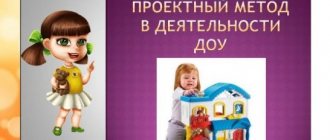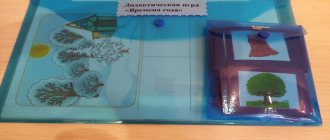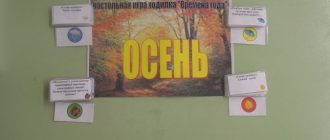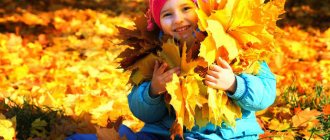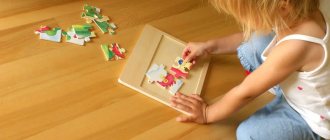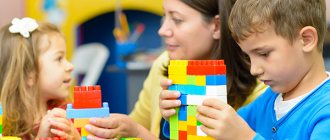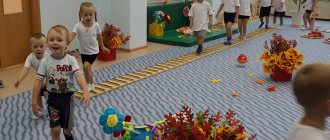By introducing teaching aids as visual material into the educational process, the teacher helps children develop materialistic ideas, teaches them to develop skills and abilities to interact with the world.
At the same time, different visual material is used for each stage of the learning process.
Education of a preschooler is very important accompanied by the use of various teaching aids. This helps them acquire new knowledge based on age-related characteristics.
Visual material is prepared in such a way as to influence several senses at once.
The image is presented to the child comprehensively. The child more firmly assimilates new information and learns to understand the connection between the acquired knowledge and practical life.
What do they include?
Didactic materials include materials that competently complement learning:
- presentations;
- educational games;
- all kinds of cards;
- drawings;
- diagrams, tables;
- graphs, diagrams;
- contour maps.
For preschool institutions, these are simpler materials that are aimed at learning through play. At school, these are contour maps, textbooks, workbooks, collections of problems, things that make studying more interesting and effective.
Didactic materials help you complete the task independently. Schoolchildren also make such teaching aids with their own hands or together with a teacher.
With their help, it is easier to master the lesson and remember new information. Since during the lesson the child not only listens, but also looks at all kinds of examples, drawings, pictures.
Training is becoming more diverse. For a more visual understanding of the new material, the teacher can even show an interesting video or presentation. This is also didactic material. Students are interested in this presentation of material.
Didactic material is also used to consolidate the lesson learned and its further development.
Children learn different ways of presenting information and learn to work with them correctly and select important information.
Visual modeling in kindergarten
Visual modeling is an effective means of developing intellectual, creative, thinking abilities in preschool children
Author: Yulia Anatolyevna Timoshkina, teacher at the Children's Development Center - Kindergarten No. 58, Moscow. Saransk, Republic of Mordovia. Description of the material: The material will be useful to preschool teachers who are concerned with the development of logical thinking in their students. Goal: Creating conditions for improving pedagogical literacy and replenishing methodological repositories with interesting and useful material. Objectives: 1. To focus the attention of teachers on the relevance of the problem of developing logical thinking in preschool children. 2.Help educators determine ways to increase the development of intellectual, creative, and thinking abilities of students. The use of visual modeling as a means of developing logical thinking remains relevant. The relevance lies in the fact that modern life is characterized by rapid and profound changes. In the age of informatization and technologization of society, a new level of thinking is required. Therefore, the teacher’s task is to help each child in his development. The effectiveness of the development of a child’s thinking will increase if a visual model serves as a teaching aid. With the help of visual modeling, the child learns
to think logically, reason, and draw conclusions. He should feel like a “creator”, discovering something “new” for himself. At the beginning, children master models of single, specific situations. At this stage of work, the child learns to create and use symbolic, conventional designations. The use of symbolic means allows the child to express his attitude to reality, generalize and demonstrate his emotional and cognitive experience. The child looks at pictures of trees: oak, birch, spruce, pine - generalizes and names the formed group with a general word - trees.
Conventions play a big role in working
with the natural calendar, which is a pie chart with the changing seasons. Seasonal changes are symbolically indicated. These symbols help the child remember, assimilate, consolidate, and compare the characteristic features of the seasons.
The symbols that the child uses every day when observing living and inanimate nature play a significant role.
Symbolic designations are used to determine general distinctive features, properties for comparison, classification, and grouping according to narrower characteristics. Thus, by reasoning, comparing, proving, the child acquires knowledge in the process of thinking.
At this level, the child is prepared for visual modeling. Children's mastery of visual modeling
Visual models are understood as such types of images of various objects, phenomena, events, in which they are highlighted and presented in a more or less generalized and schematized form. At this stage of work, the child becomes familiar with models and diagrams, which consist of symbols and express more complex relationships. There is an introduction to Euler circles. A circle with a symbol is given, denoting a generic concept, and specific concepts are selected. Thus, the ability to classify, group and generalize without the use of practical actions develops.
Children learn to build models that are generalized and reflect the essential features of many objects and situations. The use of Euler circles is widely used in various classes. But most often they are used in logical thinking classes. The action of constructing and applying models can be practiced in children in different sequences, depending on the nature of the models themselves and the type of relationships that are displayed in them. In some cases, it is advisable to introduce children to a new type of model, teaching them to use a model previously created by adults. In other cases, on the contrary, mastering the construction of a model contributes to its development and correct use. A model that reflects the influence of living conditions on the structure of plants helps the child understand why these plants can live in certain conditions and how they are adapted to them. Ecosystem models provide insight into the inextricable interconnection of all living and nonliving things on Earth. Typically, such models, complex in content, are used in diagnostic classes. There are models that children create over several lessons. Mastering the construction of a model (ladder) of the evolutionary development of animals.
Children place the animals in the order they appear. Children’s independent construction of various models contributes to the development of their creative abilities, the emergence and implementation of their own ideas when creating fantastic “living worlds.” In the process of working on visual modeling, a special style of communication with children is developed. During conversations, we follow the child’s logic without imposing our opinion.
We recommend watching:
From the work experience of a kindergarten teacher. Environmental education of preschool children. From the work experience of a preschool teacher. Health-saving technologies in preschool educational institutions.
Similar articles:
Social development of preschool children
Tables
This is also handout material, but visual materials in the form of tables are very diverse, so they are classified as a separate group. Tables exist for reference, training, educational, and testing. Information in tables is arranged in groups in the form of columns, various diagrams, and diagrams. Large tables are used as posters and hung on the wall.
Educational didactic materials (tables and graphs) come in several types:
- Reference - they contain frequently used information; such tables are usually placed like posters. For example, the periodic table in the chemistry classroom.
- Educational (such tables serve as additional material to the material being studied, for example, an image of the food chain, a visual image of the seasons).
- Instructional (such tables are used as samples, for example, for correct spelling).
- Training (for training and consolidation of the material covered, for example, for training mathematical skills).
- Information.
Middle group. Junior preschool age. Children 4 - 5 years old
Layout “Magic Winter” for children 4–5 years old
The long-awaited winter has arrived. Snowy with frosts and blizzards on one side, crystal and magical on the other. According to the tradition of our group, each new topic is a new interesting layout . Our children are 4-5 years and are excellent assistants in any work, especially creative work. For…
Master class on making a model “Autumn in our forest” for children 3–4 years old
Master class on making a model “Autumn in our forest”
for
children 3-4 years old Novikova G.F. I present to your attention the didactic manual “Autumn in our forest”
Love, understanding and care - this is what living nature expects from every person. It is advisable to start these feelings...
Electronic manuals
What are educational materials in electronic form? These are video lessons, various presentations, electronic audio and video books.
The most effective of all electronic aids are video lessons; by watching such material, most of the information is absorbed. With the help of a video lesson, the student can independently study the topic; this option is convenient if the student is ill or when learning remotely.
Such materials are supplemented with tables, diagrams, photographs, which makes the learning process more fun.
So, when using electronic materials, there is no need for a whole bunch of paper notes and visual aids, but naturally this does not replace them completely.
With distance learning, you have the opportunity to ask questions to the teacher online, complete practical work and submit it for testing.
The presence of electronic materials in the modern world is necessary and plays a huge role in the learning process:
- the efficiency of mastering the material increases;
- searching for information takes less time;
- children are interested in learning the subject;
- You can study the lesson yourself;
- can be used for a large audience;
- it is possible to clearly explain new information.
Visualization in kindergarten for children with amblyopia and strabismus
It should be noted that in some situations when it is impossible to provide children with natural objects for examination (for example, when studying the topic “Transport”), they first show models, toys, examine and play with them. This allows children with low visual acuity to later - when observing real transport objects on an excursion - recognize them even at some distance.
Natural objects should be widely used as handouts in various classes and lessons (for example, in special correctional classes when teaching children of preschool and primary school age tactile examination techniques; when teaching them to count, compose arithmetic problems, etc.).
When choosing natural objects for demonstration in classes and lessons, certain requirements should be observed:
- objects must be convenient for visual and tactile examination;
-items must be of a traditional, easily recognizable shape with clearly defined main details;
-items should be brightly colored, with the main details highlighted in color.
Three-dimensional visualization is subject to the requirements of conveying the characteristic features of the depicted objects (for example, a model of a car, a model of a room). It is important to maintain the correct proportions and relationships between parts of an object in a model or layout.
Didactic toys used in classes and lessons to familiarize children with some household items (for example, a toy gas stove or washing machine, doll furniture) also act as models and must meet the same requirements (i.e., be clearly highlighted main details that characterize the depicted object, for example, handles, burners and oven - on a gas stove). Toys depicting a person or animal must represent all parts of the body and their correct proportions; toys depicting an animal - the structural features of this animal, its real color.
There are also a number of requirements for visual clarity. When selecting or making visual aids of this type, it should be taken into account that the ability to distinguish images depends on the acuity of central vision. B.K. Tuponogov refers in his work (1999) to research data by V.P. Zhokhov and others, which indicate the minimum sizes of objects presented to children with visual pathology. So, with a visual acuity of 0.01-0.03 it is at least 15 mm, with a visual acuity of 0.04-0.08 - at least 5 mm, with a visual acuity of 0.09-0.2 - at least 3 mm.(12).
You should also take into account the fact that children with visual impairments perceive images in color better than black and white, silhouette and contour ones. The perception of color images stimulates the visual response, activates visual functions, and creates a positive emotional mood in children. For visual diseases such as strabismus and amblyopia, the perception of certain colors (red, yellow, orange) is especially important, as it disinhibits the cone apparatus of the retina, thereby helping to consolidate the results of treatment aimed at increasing visual acuity.
A visual aid for the book corner of the second junior group.
A visual aid for the book corner in the second junior group.
The book introduces a child to the most difficult things in life - into the world of human feelings, joys and sufferings, relationships, motives, thoughts, actions, characters. The book teaches you to look into a person, see and understand him, and cultivates humanity. Read in childhood, it leaves a stronger impression than read in adulthood. The corner of a book plays a significant role in developing preschoolers’ interest in fiction. This is a special, specially designated place where a child can independently, according to his taste, choose a book and calmly examine and “re-read” it. Here there is an intimate, personal communication between a child and a work of art - a book and illustrations. All kindergarten groups should have a book corner. The main principle that teachers must adhere to when organizing it is to satisfy the diverse literary interests of children. Each teacher can show individual taste and creativity in decorating a corner of a book. The book corner should be cozy, attractive, inviting the child to leisurely, focused communication with the book. The selection of literature and pedagogical work organized in the book corner must correspond to the age characteristics and needs of children.
In younger groups,
the teacher gives children the first lessons in independent communication with a book: introduces them to the corner of the book, its structure and purpose, teaches them to look at books and pictures only there, tells the rules that must be followed (take books with clean hands, leaf through carefully, do not tear, do not wrinkle, do not use for games; after looking, always put the book back).
Later, in the middle group
, the basic skills of independently and carefully looking at books are consolidated and become a habit.
As a rule, a few
(4-5) books
in the book showcase of the younger group . However, the teacher should have additional copies of the same books nearby. The replacement period for books is 2 – 2.5 weeks. As a rule, publications already familiar to children with bright, large illustrations are placed in the corner of the book; in addition to books, there may be individual pictures pasted on thick paper. There should also be small albums for viewing (topics: “Toys”, “Games and activities”, “Pets”, etc.). Books should have a small amount of text, with large colorful illustrations - picture books: fairy tales “Kolobok”, “Turnip”; “Toys” by A. Barto, “Fire Horse” by V. Mayakovsky, “Mustachioed and Striped” by S. Marshak, etc.
In order to more easily explain the rules for using the book in the second junior group, I have developed a visual aid that allows each rule to be visualized, which makes learning the rules more interesting and memorable. While voicing each rule, I simultaneously show the corresponding picture.
- Take the book with clean hands:
- Flip carefully past the corner of the page:
- Do not tear, do not crush, do not use for games:
- Do not throw:
- Always put the book in its place:
We remember that books are our friends! It depends only on the adult how the child will handle the book. Take care of the book!
Used materials:
Material from the site: https://nsportal.ru/detskii-sad/raznoe/proekt-ugolok-knigi-v-detskom-sadu
Gurovich L.M., Beregovaya L.B., Loginova V.I. Child and book. – M.: Education, 1992.
Teacher of MBDOU No. 308
Krasnoyarsk
A.Yu.Rudakova

